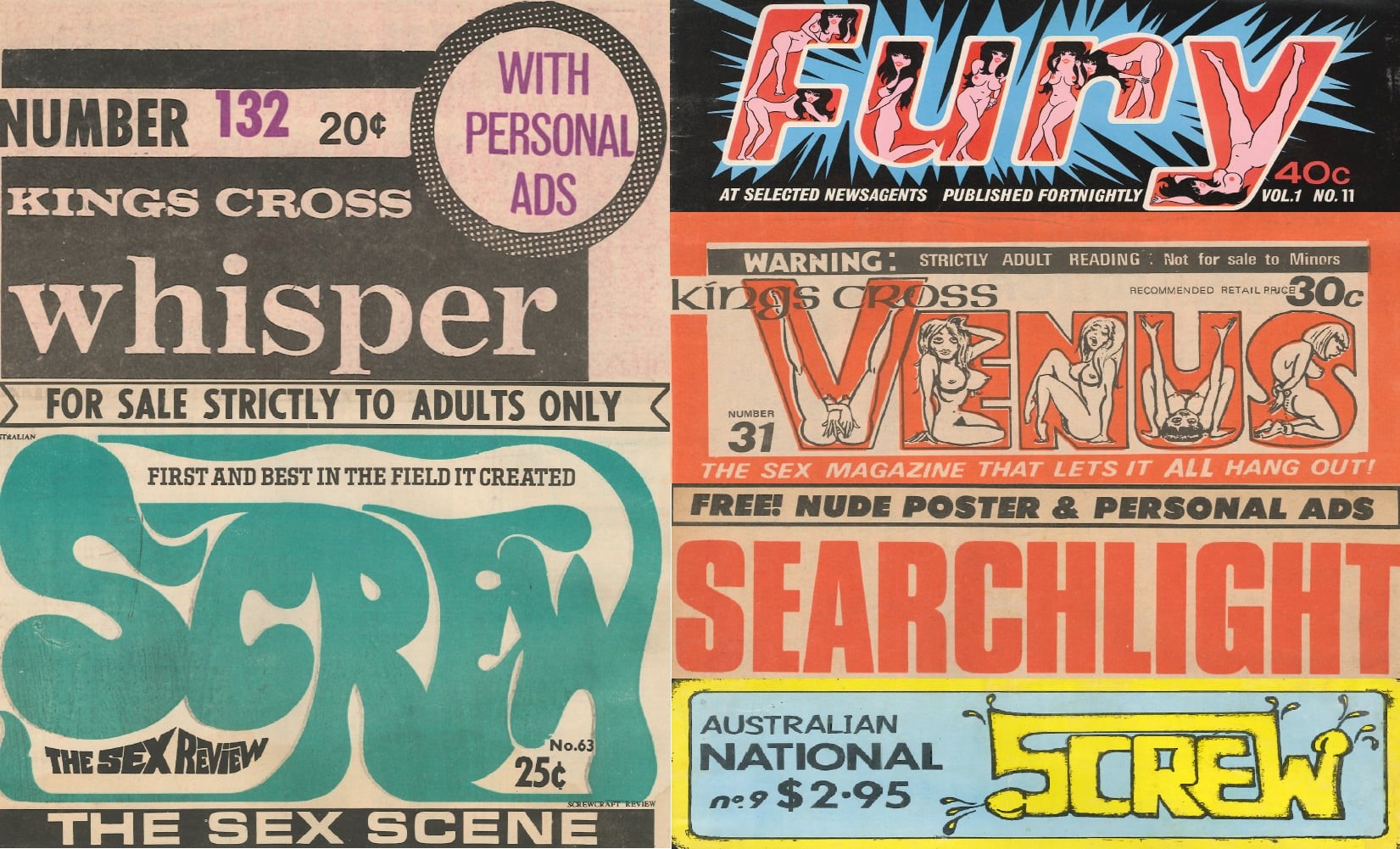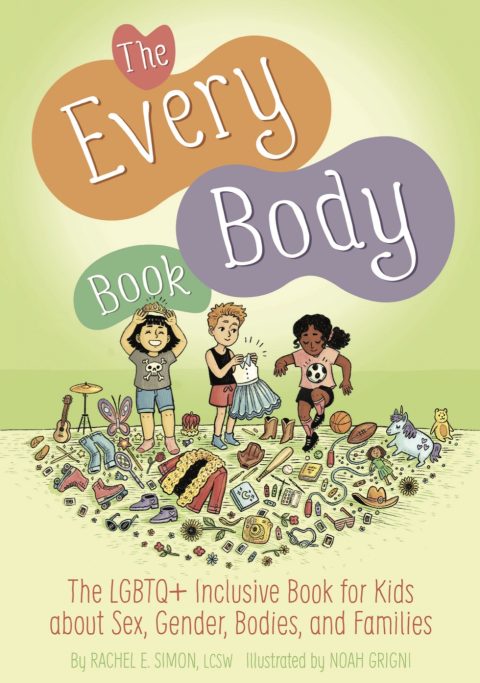An issue that comes up when talking about Jewish influence, especially, say, in the early twentieth century, is how to interpret the calls of some Jewish intellectuals for Jews to assimilate. Assimilation can mean many things. We can all agree that Orthodox and Hasidic Jews tucked away in self-created ghettos and eschewing secular education are not assimilated; such groups were more mainstream in the Jewish community in the early twentieth century in America, since the vast majority of Jewish immigrants to the U.S. came from Eastern Europe where they lived quite apart from the surrounding society and often did not speak the language of the country they were living in.
But what about Jews who rejected the ghettos and toned down their religious observance to Reform Judaism or rejected religion altogether? Does speaking English and being a baseball fan mean that one is assimilated to America and its culture? Is Bill Kristol assimilated? What about pro-Israel fanatic and Hollywood mogul Haim Saban (Democrat funder), a dual citizen of the U.S. and Israel who once said of himself: “I’m a one-issue guy, and my issue is Israel.” The late casino billionaire Sheldon Adelson (Republican donor) who also wanted to nuke Iran? Jonathan Greenblatt?
They would all say that they are assimilated despite their intense support for Israel as a Jewish state—which (obviously) may not have the same interests as the United States, as Mearsheimer and Walt and many others have stressed.
The problem is that Jews who have advocated assimilation rarely spell out what they mean, and therein lies the problem. Are they saying Judaism should disappear into the general European-derived gene pool of the U.S. or perhaps into the U.S. population as a whole, so that after a few generations, Judaism would be a distant, historically interesting memory of no current political or cultural relevance in the U.S.? Or are they saying that Judaism should continue to exist along with Jewish activist organizations like AIPAC, the ADL, and organizations such as Birthright Israel that advance Jewish interests or identity but while also being immersed those aspects of American culture that don’t conflict with Jewish interests—such as professional sports, appreciating non-Jewish writers (even White male non-Jewish writers), or even listening to country music. If the latter, one can certainly argue that Jewish assimilation is at best partial and at worst a façade masking commitment to Jewish interests that may be incompatible with the interests of the society as a whole and with the interests of other important components of the society. Support for Israel is the most obvious example—such as the current trend toward equating anti-Zionist and pro-Palestine attitudes and boycotts with anti-Semitism.
Or does assimilation mean something in between—say strongly identified secular Jews whose world very consciously revolves around Jewish identity and interests to the exclusion of pretty much everything else. Needless to say, such a person is not assimilated in any meaningful sense.
The problem must be addressed historically. During times of heightened anti-Semitism, such as during the 1920s until after World War II, Jews were well advised to be circumspect about their Jewish identities and Jewish commitments. For example, the Zionist movement began in the late nineteenth century but was a minority viewpoint within the Jewish community until the establishment of Israel because of fears of charges of “dual loyalty”—the idea that Jews would be at least as loyal to Israel as to the United States, and perhaps even more loyal to Israel. Even in the twenty-first century, neoconservative Jews with strong emotional and family connections to Israel are careful to frame their proposals for war in the Middle East as serving U.S. interests.
This is a general point. Jews, as a relatively small minority in the West, must attempt to appeal to non-Jews and avoid framing their theories and policy proposals in terms of their Jewish identity and Jewish interests. Thus one searches in vain for public pronouncements and framing of theories explicitly in terms of advancing Jewish interests. And thus the lucrative and therefore tempting infrastructure that Jews have created in support of their causes, such as the network of neoconservative think tanks, positions at universities, and opportunities in the media that undoubtedly attract many non-Jews. But typically, in the absence of evidence of explicit Jewish activism (e.g., being a member of the ADL or AIPAC, or, as in the case of the Frankfurt School, having your central academic work, The Authoritarian Personality (1950), published by the American Jewish Committee), one must must pore over detailed biographies that include, e.g., accounts of private conversations and letters. Freud, for example, left behind a great deal of evidence of his Jewish identity and his sense of Jewish interests. Others did not, so one is forced to piece together an account on relatively scant evidence.
One tactic that may be helpful in this regard is to determine whether the attitudes of a particular person are congruent with mainstream Jewish opinion as explicitly stated by prominent Jewish activist organizations like the American Jewish Committee during the 1920s. While a Jewish intellectual intent on establishing scientific credibility in the wider scientific community may be loath to explicitly state his attitudes and opinions on Jewish issues, Jewish organizations are typically not reticent. For example, during the 1920s’ immigration debates during which the American Jewish Committee (fronted by Louis Marshall) played by far the greatest role in opposing restriction, Franz Boas published his study of the skull shapes of immigrants (later found to be likely fraudulent). From Chapter 7 of The Culture of Critique:
Boas was greatly motivated by the immigration issue as it occurred early in the century. Carl Degler (1991, 74) notes that Boas’s professional correspondence “reveals that an important motive behind his famous head-measuring project in 1910 was his strong personal interest in keeping the United States diverse in population.” The study, whose conclusions were placed into the Congressional Record by Representative Emanuel Celler [the Jewish Congressman who was a leader of the anti-restriction forces in the House] during the debate on immigration restriction (Cong. Rec., April 8, 1924, 5915–5916), concluded that the environmental differences consequent to immigration caused differences in head shape. (At the time, head shape as determined by the “cephalic index” was the main measurement used by scientists involved in racial differences research.) Boas argued that his research showed that all foreign groups living in favorable social circumstances had become assimilated to the United States in the sense that their physical measurements converged on the American type. Although he was considerably more circumspect regarding his conclusions in the body of his report (see also Stocking 1968, 178), Boas (1911, 5) stated in his introduction that “all fear of an unfavorable influence of South European immigration upon the body of our people should be dismissed.” As a further indication of Boas’s ideological commitment to the immigration issue, Degler makes the following comment regarding one of Boas’s environmentalist explanations for mental differences between immigrant and native children: “Why Boas chose to advance such an adhoc interpretation is hard to understand until one recognizes his desire to explain in a favorable way the apparent mental backwardness of the immigrant children” (p. 75).
It’s not too much of a stretch to assume that Boas was ethnically motivated along with the mainstream activist Jewish community on this issue. Yet I suspect that if Boas was asked whether his Jewish background influenced his research, he would deny it—something like, “I just think that diversity is intrinsically good. Diversity is our greatest strength!” End of story.
This relates to another fundamental issue: the complexity of Jewish identity in general. The point here is that deception, self-deception and even honest lack of self-awareness (e.g., the example below of a rabbi who “didn’t know how Jewish he was” until he became obsessed about Israel’s Six-Day War) abound among Jews in their relationship to being Jewish and pursuing Jewish interests. The result is that one has to do the best one can while realizing that the historical period makes a difference—Jews are much more apt to expressly identify as Jews and assert their interests as Jews now because there are far fewer downsides to doing so than a century ago. As a result, one can be forgiven for pouncing on relatively small indications of Jewish identity and interests as decisive indicators during some periods more than others. The following is the majority of Chapter 8 of Separation and Its Discontents on Jewish self-deception, without the footnotes. The point is that even Jews who claim not to have a Jewish identity or to work on behalf of Jewish interests may be engaging in deception or self-deception. Both are quite adaptive processes with a likely evolutionary origin.
* * *
Jewish self-deception touches on a variety of issues, including personal identity, the causes and extent of anti-Semitism, the characteristics of Jews (e.g., economic success), and the role of Jews in the political and cultural process in traditional and contemporary societies. Perhaps the most important example of self-deceptive Jewish religious ideology, reiterated as a theme of Jewish self-conceptions beginning in the ancient world, is the view that Judaism is an ethically superior, altruistic group and is therefore morally obligated to continue as a cohesive, genetically segregated group purely for the ethical purpose of providing a shining example to the rest of humanity (see Chapter 7).
Because of their critical attitudes toward diaspora Judaism, Zionists have often been quite conscious of the mental fabrications of their coreligionists. Thus the historian Sir Louis Namier (1934, xxxvii–xxxviii) (himself an Anglican convert and Zionist activist [Whitfield 1988]) describes the “better-class” liberal Jew in pre-National Socialist Germany who
was high-minded, broad-minded, open-minded, and without roots, for he lacked the live touch with any living community. . . . His conception of Judaism merely as a religion was curiously superficial and self-contradictory. For that which distinguishes the Jewish religion in its modern form from, say, Christian Unitarianism, is merely the national tradition which most of the adherents of Liberal or Reform Judaism profess to reject. By refraining from complete amalgamation and by maintaining their separate racial and historical identity, of which they deny the existence, they have kept themselves suspended in mid-air—moral Luftmenschen, who provoke criticism among their own people and distrust among the non-Jews. In reality, most of them were perfectly sincere within the limits of their own conscious thinking; they did not avow their insincerity even to themselves.
The German economist Werner Sombart (1913, 264) touched on Jewish self-deception in his work, Jews and Modern Capitalism:
Just as so many Jews do not see themselves—do they not deny their obvious characteristics and assert that there is no difference between them and Englishmen or Germans or Frenchmen? . . . How many Jews still hold that the Jewish Question is only a political one, and are convinced that a liberal régime is all that is required to remove the differences between the Jew and his neighbour. It is nothing short of astounding to read the opinion of so soundly learned a man as the author of one of the newest books on the Jewish Question that the whole of the anti-Semitic movement during the last thirty years was the result of the works of Marr and Dühring. “The thousand victims of the pogroms and the million sturdy workers who emigrated from their homes are but a striking illustration of the power of—Eugen Dühring” (!)
Sombart’s comments touch on the apologetic nature of Jewish historiography which is a central theme of Chapter 7. Much of this work undoubtedly involves self-deception. In a comment that also stresses the complexity of Jewish identity processes, Lindemann (1997, 535; italics in text) writes that “Jews actually do not want to understand their past—or at least those aspects of their past that have to do with the hatred directed at them, since understanding may threaten other elements of their complex and often contradictory identities.”
Zionist historian Gershom Scholem (1979) describes the massive self-deception among the “broad Jewish liberal middle class” (p. 16) living in Germany from 1900 to 1933. Scholem describes the “contrast between the general principles that were consciously upheld in domestic discussions and the mental attitudes that remained subconscious and in many cases were even explicitly disavowed” (p. 17). They accepted the ideology that Judaism was nothing more than a religion despite the fact that most of them had no religious beliefs and many had developed “Jewish feeling which no longer had anything to do with religion” (p. 20). Many accepted the ideology that “the mission of Judaism was its self-sacrifice for the common good of mankind” (p. 26), despite the fact that Jews were vastly overrepresented in all of the markers of economic and cultural success in the society. Jews would lead humanity into a universalistic, ethically superior golden age, while they themselves retained “semi-conscious” feelings of solidarity with international Jewry. Their avowals of anti-Zionism and German patriotism were often “more evident than real” (p. 18)—a comment that brings to mind the much earlier observation of Moses Hess, who wrote in 1840 about the despised assimilated Jew “who denies his nationality while the hand of fate presses heavily on his own people. The beautiful phrases about humanity and enlightenment which he employs as a cloak for his treason . . . will ultimately not protect him from public opinion” (in Frankel 1981, 12). The self-image of being completely socially assimilated also coexisted with exclusive socialization among other Jews and criticism of upper-class Jews who socialized with gentiles. Self-images of assimilation also coexisted with very negative or ambivalent attitudes toward conversion and intermarriage.
Moreover, the image of being submerged in completely “German” activities coexisted with the reality of engaging in activities that only Jews engaged in, and also in taking great pride in Jewish accomplishments, Jewish suffering, and in a Jewish history that was very different from German history. They took great pride in their invention of monotheism and in the concept that Christianity was the “daughter-religion” of Judaism—an ideology that clearly places Judaism in a superior role vis-à-vis Christianity. Their intellectual idols were people like Moritz Lazarus, Hermann Cohen, Franz Rosenzweig—all Jews, many of whom were themselves engaged in intellectual work involving self-deception. (Cohen believed that Jews had to survive as a people in order to promote a unique ethical vision [Rubin 1995a, 53].) Their literary idols were Jews who had achieved popularity among gentiles and thus were a source of group pride.
The reality of anti-Semitism was almost completely blotted out of Jewish consciousness.[1] Very few Jews read anti-Semitic literature, and the general tendency was to suppose that anti-Semitic practices “were unimportant marginal phenomena” (p. 23).[2] Jewish cultural domination was a theme of anti-Semitism, but in 1912 when Zionist author Moritz Goldstein made his famous comment that Jews should contemplate the implications of the fact that the German cultural heritage was now largely in Jewish hands, the reaction was self-deception:
The unexpected frankness with which a Jew who eschewed self-delusion thus broke a taboo which otherwise had only been violated by anti-Semites with malicious tendencies, illuminated with lightning clarity the prevailing socio-political tensions. And perhaps more illuminating was the embittered reaction of most of the Jewish participants . . . who repudiated the thesis as such, declared the ventilation of the question to be improper, and tried with all their might to efface the divisions thus exposed. (Scholem 1979, 30)
Goldstein was a Zionist, and his essay was greeted with hostility by liberal Jewish organizations who assailed the “excessive nationalism” and “racial semitism” of the Zionists (see Field 1981, 248). As Field (1981, 248) points out, another aspect of Jewish self-deception revealed by this incident was that these liberal Jewish critics never confronted the central problem raised by Goldstein when he noted that anti-Semites such as Houston Stewart Chamberlain were “the best spirits, clever, truth-loving men who, however, as soon as they speak of Jews, fall into a blind, almost rabid hatred.” The credibility of the anti-Semites, not Moritz Goldstein, was the fundamental problem for German Jews.
Interestingly, Scholem himself would appear to be involved in similar forms of self-deception, and his particular form of it bears on the issue of the apologetic nature of Jewish historiography. Scholem (1976, 87) describes Jews as engaging in a one-sided, unreciprocated love affair with Germany in the post-emancipation era. “The Jews did meet with gratitude [for their contributions to culture] not infrequently, but almost never did they find the love they were seeking.” To Scholem, Jews were seeking love from gentile Germans—a twist on the familiar theme of Jews as an altruistic group. While Scholem is oblivious to conflicts of interest between Jews and Germans in the construction of culture, anti-Semites accused Jews of being hostile toward German culture as the culture of an outgroup and as seeking to dominate that culture in order to bend it to their own interests by, for example, being less enthusiastic about the German interest in developing a cohesive and unified national culture.
However, in the same essay Scholem states that “during the generations preceding the catastrophe [i.e., the Holocaust], the German Jews—whose critical sense was as famous among Germans as it was irritating to them—distinguished themselves by an astounding lack of critical insight into their own situation. An ‘edifying’ and apologetic attitude, a lack of critical candor, taints almost everything they wrote about the position of Jews in the German world of ideas, literature, politics, and economics” (p. 89). Put together, the passages imply that Jews sought the love of the Germans via their contributions to culture despite the fact that a prominent feature of this cultural contribution was to subject German culture to intensive criticism and despite the fact that this critical sense provoked German hostility. At the same time, Jews failed to critically analyze their own role vis-à-vis German culture. It makes no sense to suppose that Jews actually sought the love of the Germans while simultaneously subjecting the loved one to intensive criticism and failing to critically examine why they were doing so. Failure to see the contradiction in his own analysis is self-deception.
Similarly, the historian Donald Niewyk (1980, 196) attributes Jewish status seeking during the Weimar period to a desire to be loved by Germans rather than to the baser human goals hypothesized by an evolutionist: “Few elements of Jewish life were untouched by the painful consciousness of unrequited love. Jewish overachievement in every area of German economic and cultural life arose from a profound wish to win respect and acceptance.” Niewyk agrees with the statement of Franz Oppenheimer, a prominent Zionist, who commented in 1926 that Jewish “overcompensation” “betrayed a powerful longing to counteract antipathy by proving the value of Jewish contributions to Germany.”
Scholem may have developed his self-deception in his family, which, if it is at all representative of assimilating German Jewry, illustrates the self-deception involved for many Jews in establishing personal identity in a modern Western society. His father Arthur was an ardent assimilationist who forced his son to move out of the house when Gershom was charged with treason for demonstrating against Germany’s war effort in World War I. However, Arthur’s assimilation was perhaps not as complete as he conceived it to be.
[Gershom] should have been used to incongruities: his mother owned a kosher restaurant, but his father had renamed himself Siegfried in honor of Wagner’s opera. In the Scholem house, customs were similarly mixed up. Arthur forbade Jewish expressions, but his wife used them anyway. Friday night was a family night when prayers were said but only partly understood, and Arthur scorned Jewish law by using the Sabbath candles to light a cigar after the meal.
On Passover, the family ate both bread and matzo. Arthur went to work on Yom Kippur and did not fast. He praised the Jewish mission to spread monotheism and ethics, and he disparaged conversion. But the family celebrated Christmas as a German national festival and sang “Silent Night.” Arthur insisted on his German identity, but almost all his friends were Jews, and no Christian ever set foot in his home. And when Gershom became a Zionist, his parents bought a portrait of Herzl and put it under their Christmas tree. (Rubin 1995a, 32–33)
Self-deception regarding personal identity continues as an aspect of contemporary civil Judaism, where it functions to reconcile a strong Jewish ethnic identity with membership in the broader social context of contemporary Western individualist societies.
Sometimes, in partibus infidelium, [a consciousness of Jewish ethnicity] is “magically,” uncannily revived: in the very midst of the cool civil nexus that binds the goyim into their solidarity of the surface, in the very heart of the sociable Gesellschaft, across a crowded room, you “know” that “somehow” you share a primordial solidarity of the depths. . . . What is most inward in their Jewish self-definitions is precisely what cannot become outward and legitimately Anglo-American, namely, the particularist inwardness of the ethnic nexus. The Western value system refuses to legitimate publicly this primordial ethnic tie. . . . Hence its stubborn, residual reality is forced “underground,” and, when it travels aboveground, it is forced to assume the fictive identity of a denominational religion (Conservative Judaism serves this function in America). (Cuddihy 1974, 86–87)
It is this perceived need to hide a deeply felt but publicly illegitimate personal ethnic identity that I suppose tends to result in identificatory self-deception among Jews. Woocher (1986, 97; see also Liebman 1973) views contemporary civil Judaism as “a complex ideological mechanism” for dealing with the ambivalence resulting from the attempt to retain group identity and also achieve full social integration. The ideology simply states that there is no conflict in these aspirations, that both are “appropriate and necessary.” However, civil Judaism’s “intense anxiety about the prospects of Jewish survival in America, its struggle against assimilation, is a signal that its denial of ambivalence is not to be taken entirely at face value.” Within the civil religion, if a Jew feels ambivalence, it is a sign that he or she truly understands the meaning of being a Jew in contemporary America. The religion simply asserts as self-evident and beyond debate that “by being a better Jew, you will be a better American; by being a better American, you will be a better Jew” (Woocher 1986, 99)—a twist on Louis D. Brandeis’s (1915) remarkable assertion that “to be good Americans we must be better Jews; to be better Jews we must be Zionists.” Such a perspective is facilitated by the self-aggrandizing and presumably self-deceptive ideology that “America is, after all, created in their image, and in pursuing the civil Jewish version of Jewish destiny they are merely reinforcing the terms of America’s own self-understanding” (Woocher 1986, 102). Indeed, Woocher’s survey results of American Jewish activists in the late 1970s indicated that for most of these individuals the primary identification was as Jews rather than as Americans, but they also endorsed statements indicating they were glad to be American and that by being better Jews they would be better Americans.
The Harvard sociologist Daniel Bell articulates well the intensity with which many secular, highly assimilated Jews are aware of a double identity; that even in 20th-century America there is a Marranoism that Jews in 15th-century Spain would have sympathized with: “I was born in galut [exile] and I accept—now gladly, though once in pain—the double burden and the double pleasure of my self-consciousness, the outward life of an American and the inward secret of the Jew. I walk with this sign as a frontlet between my eyes, and it is as visible to some secret others as their sign is to me.” Bell concludes that “one realizes that one does not stand alone, that the past is still present, and that there are responsibilities of participation even when the community of which one is a part is a community woven by the thinning strands of memory” (Bell 1961, 477, 478).
Identificatory questions were characteristic of the German-Jewish economic elite in the period from 1800 to 1933. They engaged in very intricate intellectual rationalizations centered on their own personal identity and that of their children (see Mosse 1989, 45ff). These rationalizations, some of which were predicated on the idea that Jewish identity presented no problems, suggest a degree of self-deception:
Whilst some “ideological” solutions to [the search for personal identity] had an apparent logic and whilst some forms of practical engagement provided empirical solutions, many of the ‘solutions’ offered . . . were far-fetched and unconvincing. . . . However thoughtful and well-educated, no member of the of the Jewish economic élite, probably, could find a satisfactory theoretical (or “ideological”) solution to the dilemma. . . . Basically, the eternal and inevitable “outsider” could achieve no full identification—almost by definition—with the “solid majority.” (Mosse 1989, 90–92)
Self-deception and identificatory ambivalence among Jewish leftists is a major theme of The Culture of Critique. Consider the following summary of the attitudes of a sample of Jewish-American communists:
Most Jewish Communists wear their Jewishness very casually but experience it deeply. It is not a religious or even an institutional Jewishness for most; nevertheless, it is rooted in a subculture of identity, style, language, and social network. . . . In fact, this second-generation Jewishness was antiethnic and yet the height of ethnicity. The emperor believed that he was clothed in transethnic, American garb, but Gentiles saw the nuances and details of his naked ethnicity. . . .
Evidence of the importance of ethnicity in general and Jewishness in particular permeates the available record. Many Communists, for example, state that they could never have married a spouse who was not a leftist. When Jews were asked if they could have married Gentiles, many hesitated, surprised by the question, and found it difficult to answer. Upon reflection, many concluded that they had always taken marriage to someone Jewish for granted. The alternative was never really considered, particularly among Jewish men. (Lyons 1982, 73–74)
Indeed, Jews may not consciously know how strongly they in fact identify with Judaism. For example, Silberman notes that around the time of the 1967 Arab/Israeli war, many Jews could identify with the statement of Rabbi Abraham Joshua Heschel that “I had not known how Jewish I was” (in Silberman 1985, 184; emphasis in text). Silberman comments that “This was the response, not of some newcomer to Judaism or casual devotee but of the man whom many, myself included, consider the greatest Jewish spiritual leader of our time.” Many others made the same surprising discovery about themselves: Arthur Hertzberg (1979, 210) wrote that “the immediate reaction of American Jewry to the crisis was far more intense and widespread than anyone could have foreseen. Many Jews would never have believed that grave danger to Israel could dominate their thoughts and emotions to the exclusion of everything else.”
In contemporary America there is a potential for identificatory ambivalence resulting from the very central role which a foreign government, Israel, plays in the civil religion of American Jews. For example, a survey conducted in the late 1970s found that among highly committed Jews, 70 percent agreed or strongly agreed with the statement “I feel more emotional when I hear Hatikvah [the Israeli national anthem] than when I hear the Star Spangled Banner,” while less than 33 percent agreed or strongly agreed with the statement, “The primary loyalty of American Jews must be to the United States and their fellow Americans.” However, as Woocher (1986, 99) notes, the ideology that there is no ambivalence and no inherent difficulty is a powerful one, since “it has sufficient face validity to make its articulation as a general principle plausible.”
There has also been self-deception (or deception) regarding Jewish economic success. Shapiro (1992, 118) notes that Jews are overrepresented by at least a factor of nine in the highest levels of economic success in American society. He also notes that Jews have taken steps to prevent this vast Jewish overrepresentation from being widely known, because of fears of anti-Semitism. Further, he notes that Jewish historians of Judaism in America have traditionally paid scant attention to the many instances where Jews have accumulated great wealth or have distinguished themselves intellectually, preferring, in the words of Irving Howe, to depict the Jewish immigrant experience as “a readiness to live for ideals beyond the clamor of self, a sense of plebeian fraternity, an ability to forge a community of moral order even while remaining subject to a society of social disorder” (in Shapiro 1992, 118). Similarly, Shapiro notes that in the 1940s the ADL downplayed the vastly disproportionate role of Jews in science, the professions, the arts, government, and the economy, pointing instead to the existence of Jewish laborers. In England during the 1930s Sidney Salomon, a journalist and secretary of the Defence Committee of the Board of Deputies, published a volume The Jews of Britain that deliberately downplayed the role of Jews in finance and commerce and emphasized their accomplishments in medicine and the arts (Alderman 1983, 122).
This type of deception or self-deception is also illustrated by another work by Irving Howe. In his discussion of Jewish influences on American culture, Howe (1978) completely ignores the consistent theme of post-Enlightenment anti-Semitism that Jewish influence on culture serves Jewish interests and conflicts with the interests of many gentiles. Instead, he concentrates on several Jewish influences on American culture perceived as entirely benign, including bringing Old World influences to bear on American culture (e.g., the Modernist movement) and especially a sense of alienation and separation from the wider culture: “To feel at some distance from society; to assume, almost as a birthright, a critical stance toward received dogmas, to recognize oneself as not quite at home in the world” (p. 106). Or as Barry Rubin (1995b, 144) expresses it, “with partial assimilation as normative, to be at home was never to be at home, living a reflexive high-wire act of anxiety and marginalism: rage, anxiety, restlessness, insatiability, as well as alienation, skepticism, intellectual orientation, and moralism infused with passion.”
I agree that this is an insightful interpretation of one form of Jewish cultural influence, and one can easily see in it the traditional separation of Jews from the surrounding society that is so essential to all forms of Judaism. However, it is also easy to see that it is exactly this latter influence that tends to undermine the fabric of gentile social structure and has been a potent source of anti-Semitism since the Enlightenment (see Ch. 2). Howe’s failure even to mention these considerations may be interpreted as another example of self-deception.
Indeed, Robert Alter (1965, 72) notes that the view of many Jewish writers of themselves as outsiders had “dwindled into an affectation or a stance of pious self-delusion.” Their fiction creates a “double sentimental myth: the Jew emerges from this fiction as an imaginary creature embodying both what Americans would like to think about Jews and what American Jewish intellectuals would like to think about themselves.” An example is the “pious self-delusion” (Alter 1969, 39) involved in depicting the Jew as an intensely morally sensitive, Christ-like sufferer who bears the world’s guilt on his shoulders.[3] Cuddihy (1974, 183) terms it “the ‘moralistic style’ of the modern oppositional intelligentsia.” It is the secular equivalent of the “light unto the nations” self-conceptualization that has been at the heart of Jewish identity since the beginning and particularly since the Enlightenment.
Reflecting self-deception and negative perceptions of the outgroup, Jewish intellectuals have held on to the idea of the Jew as outsider and underdog long after Jews had achieved vastly disproportionate success in America (Shapiro 1992, 123). This self-deception of Jews as oppressed can be seen in a recent work by Tikkun editor Michael Lerner (Lerner & West 1995) in which he argues that for Jews in contemporary America “there is a level of spiritual and psychological oppression that is as real and as fundamental as any other form of oppression. . . . It’s the oppression and pain that comes from denying our human capacity” (p. 237). Jews are outsiders in American society because American white society as a whole does not conform to a specifically Jewish ethical ideal despite the fact that Jews are highly overrepresented among all the indices of economic and cultural success in American society, including ownership of large corporations. In Lerner’s perspective, this high-income economic profile of the Jews occurs because Jews are passive victims of the gentile “ruling elite” that uses them as helpless servants to further its own interests just as it did in traditional societies: “Jews have been put into an intermediate position, in between the ruling elite who own the major economic institutions and the American majority, which has little real economic power. Jews become the middlemen—the lawyers, doctors, government bureaucrats, social workers, school teachers, and college professors. They appear to the vast majority of the population as the public face of the ruling elite” (p. 232). From Lerner’s perspective, Jews must not identify as whites and must act to transform American society in the image of this specifically Jewish ethical ideal—an astonishing example of ingroup glorification, coming as it does from a 20th-century intellectual, but one that is entirely congruent with Jewish self-conceptualizations throughout history.
Indeed, in Lerner’s view, an important source of traditional anti-Semitism is that “even before Christianity emerged, Jews were a troublesome people to ruling classes of the ancient world, because they had emerged with a revolutionary message, articulated in the Exodus story: the message that ruling classes were not inevitable, that the world could be fundamentally transformed” (p. 49). “No wonder then that ruling elites have always hated the Jews, worried about their passion for social justice, and done their best to portray them as ‘weird’ and ‘untrustworthy’ and ‘manipulators’ whom everyone else in the world would do best to avoid or distrust. . . . Ruling elites who found this message [of social justice] disturbing did all they could to stir up their own domestic populations against the Jews, to spread vicious stories about us” (pp. 9–10).
This is a remarkably fanciful reading of Jewish history—a reading that is possible only by ignoring the general tendency for Jews to exist only at the sufferance of gentile elites and also the frequent role of Jews as intermediaries between oppressive elites and native populations, as well as the general tendency of gentile elites to protect Jews against repeated outbreaks of anti-Semitism from the lower orders of society.
Recently Philip Weiss (1996) created a considerable stir when he acknowledged the unreality of the Jewish self-conception as an outsider and several other self-delusionary aspects of being Jewish in late 20th-century America. As expected from a social identity perspective, being Jewish is highly salient to him and strains his relationships with gentiles. He pictures his gentile Yale classmates as “blond and slightly dull witted, while the Jewish professor spews out brilliant lines. . . . We held them [gentiles] in a certain contempt. But we were marginalized. We were the outsiders. I’ve carried those lessons around with me all my life as I’ve made my own steady progress in the world. . . . Feelings of marginalization have informed my journalism, my humor, my social navigations” (pp. 25–26). (Even the aggressively ethnocentric Alan Dershowitz is quoted by Weiss as saying, “There is in our tradition, understandably but tragically, an anti-Gentile bias that we must root out.”) Indeed, his relationships with gentiles are strained by his “relentlessly defensive Jewish identification,” another way of saying that he is unable to relate to gentiles without invoking the ingroup/outgroup comparisons so central to the evolutionary version of social identity theory sketched in Chapter 1.
Jews cherish feelings of exclusion not just because there is wisdom in foreboding but because these feelings are useful. They preserve our position as outsiders, a status that has certain moral and practical advantages. As an outsider you have motivation: to get in. And you get to be demanding without any particular sense of reciprocity: the ADL (which is committed to fighting all forms of bigotry) running its Geiger counter over the goyim while failing to gauge Jewish racism. Perhaps most important, these feelings solidify Jewish identity. (p. 30)
Jews have . . . prevaricated about the question of Jewish influence—whether we have it, how we gain it, what it means. . . . When the NRA exercises political power, it’s a hot-button issue. When Jewish money plays a part, discussing it is anti-Semitic. (p. 32)
As indicated in Chapter 2 (p. 55), the fact that Jewish power and influence is off-limits is a component of contemporary writing deemed anti-Semitic by Jewish organizations. During a discussion of the “disproportionate” influence of Jews, Weiss quotes the ADL’s Abraham Foxman as saying “You say ‘disproportionate’ to your numbers’—to me that is dangerous. To me that is sinister. To me that feeds all the undertones. How do you combat an attitude that has been out there for 200 years that says you’re too successful, you’re too smart, you’re too powerful, you’re too influential? How do you deal with people who covet your success? What do you do—do you hide it?” Weiss comments: “But that’s what he does; goes into panic mode when you try to make observations about Jewish achievement” (p. 33). Indeed, when Foxman describes the great interest foreign governments have in asking him to influence the American media and government, he is careful to phrase the description in a manner that is consistent with supposing that these perceptions are entirely illusory. Foxman notes that when a world leader seeks him out it is because
someone sold him the concept that the Jewish community is very strong and powerful. You know it because when you finish the conversation, they want to know what you can do for them in the media, what you can do for them in the Congress and so on. . . . That’s why the prime minister of Albania comes, and the foreign minister of Bulgaria and El Salvador, Nicaragua, you name it. You’ve got to ask yourself, what is this about? The answer is, it’s because they believe a little bit of that. (In Goldberg 1996, 17)
Whether it is deception or self-deception, the implication is that some truths are better left unstated or even unacknowledged, and regarded as pathological expressions of anti-Semitism. As Weiss says, there is moral capital to be gained by adopting an identification as an outsider. I believe that the moral capital obtained by being a psychological outsider has been a critical component of the movements of social criticism discussed in The Culture of Critique. To a very considerable extent Jewish status as outsiders has allowed them to engage in radical criticism of the moral and intellectual foundations of Western society while retaining a perspective of their own ingroup as ethically and morally beyond reproach. But as Weiss points out and as I have tried to document extensively, ethnocentrism and hostility toward outsiders is rife among Jews, and this is exactly what would be predicted from an evolutionary perspective based on social identity theory. Moreover, Judaism, because it is characterized by high intelligence and resource acquisition ability, has produced ethnic warfare virtually wherever Jews have lived. But by retaining the view of themselves as the morally pure outsider arrayed against a pathologically anti-Semitic gentile society, Jews are able to simultaneously pursue their own ethnic interests and conceptualize their opponents as morally depraved (and also, as Weiss notes, as “dim-witted”). Self-deception is very useful in this warfare, because it essentially allows Jewish leaders to deny the reality of Jewish wealth and political and cultural influence.
Similarly, Goldberg (1996, 6) notes that “the average American Jew views his or her community as a scattered congregation of six million-odd individuals of similar origins and diverse beliefs, fortunate children and grandchildren of immigrant tailors and peddlers.” In their own self-image, “Jews are utterly powerless and must live by their wits. Compromise is useless or worse. Politics is made of messianic visions and apocalyptic goals. Some of these visions, like Zionism and socialism, may occasionally become reality” (p. 11).
The reality, as Goldberg extensively documents, is that Jews are widely perceived as very powerful within America by friends and foes alike, as well as by foreign governments interested in influencing the American media and American foreign policy. Far from being a community with widely diverse interests, Jewish political involvement is highly focused, particularly in the areas of Israel and the welfare of other foreign Jewries, immigration and refugee policy, church-state separation, abortion rights, and civil liberties (Goldberg 1996, 5). It is noteworthy that Jewish attitudes in these areas are markedly different from other Americans and that since the great increase in Jewish political power in the 1960s all of these areas have shown massive public policy shifts that are congruent with Jewish attitudes.
There is indeed a long history both in the United States and England in which Jewish organizations have denied any concerted Jewish political behavior. For example, the AJCommittee has reacted very negatively to any mention of a “Jewish vote” by politicians or the media, while at the same time often threatening politicians by emphasizing the possible effects of the Jewish vote (e.g., Cohen 1972, 378; Goldstein 1990, 147, 163). Despite the fact that the “Jewish vote” “is not a reactionary stereotype but a fact of American politics” (Petersen 1955, 84), gentiles are encouraged to suppose that Jews have no group interests.
Louis Marshall stated at the time of the AJCommittee’s founding in 1906 that “what I am trying to avoid more than anything else is the creation of a political organization, one which will be looked upon as indicative of a purpose on the part of Jews to recognize that they have interests different from those of other American citizens” (in Goldstein 1990, 55). Goldstein comments that the attempt to aid Jews suffering from discrimination in other countries “would inevitably promote ‘interests different from those of other Americans.’ ” Marshall also stated that “there is no such thing as a Jewish Republican or a Jewish Democrat. . . . Jews have no political interests which are different from those of our fellow citizens” (in Goldstein 1990, 335–336). In fact, the AJCommittee was well aware that its perspective on immigration policy was not shared by the majority of Americans: During the fight over restrictionist legislation at the end of the Taft administration, Herbert Friedenwald, AJCommittee secretary, wrote that it was “very difficult to get any people except the Jews stirred up in this fight” (in Goldstein 1990, 203). Later Marshall himself stated that “We are practically the only ones who are fighting [the literacy test] while a “great proportion” [of the people] is “indifferent to what is done” (in Goldstein 1990, 249). Marshall made a number of other “curious distinctions” (Goldstein 1990, 336) aimed at urging Jews to vote a certain way because their interests were involved, but nevertheless denied that Jews had any group interests at all. “According to the AJC, the Jewish vote did not exist—unless, of course, politicians failed to support the organization” on specific issues (Goldstein 1990, 336). Similarly in the contemporary U. S., the ADL’s Abraham Foxman states regarding the disproportionate number of Jews in Congress, “I say to you that they are Democrats who happen to be Jews, and their Jewishness is something they wear once a week, once a month” (in Weiss 1996, 33).
The following comments about American anti-Semitism toward the end of World War II typify the attempt to erase any notion of group characteristics or group interests among Jews.
[Jews] are Republicans and Democrats, like everybody else. A few of them are Communists—as are a few Irishmen, Italians, and a few everything else. They are divided many ways over their own Zionist question. Through thousands of years, armies of Jews have gone to battle against each other—as loyal citizens of warring nations. Human beings who profess one religion have, indeed, seldom been so divided as the Jews and seldom shared the blood of so many different peoples and nationalities. This is the way it really is. (In Dinnerstein 1995, 148)
Similarly, discussion of Jewish political behavior, especially the idea of a Jewish vote, has been off limits in official Jewish circles in England (Alderman 1983, vii). At times the very same people who make highly salient denials of a Jewish vote do their best to influence Jewish voting behavior regarding issues important for Jews. For example, when alien restriction legislation was pending in 1904 and 1905, the Jewish Chronicle, the principal newspaper for the British Jewish community, strongly opposed immigration restriction in its editorials and provided highly detailed coverage of the parliamentary debates as well as lists of how particular MPs were voting. Moreover, “although the paper delivered its usual eve-of-poll disavowal of a Jewish vote, it was quick to attribute certain Tory losses and Liberal gains to Jewish voters” (Cesarani 1994, 99).
The taboo on discussing Jewish political behavior functions to promote self-deception because it maintains an illusory Jewish self-conception of the extent to which Jews are assimilated within British political culture and the extent to which specifically Jewish interests influence their political behavior. Alderman (1983, viii) notes that “I am well aware that my work in researching and writing this book has not found favour with those who lead and articulate the opinions of Anglo-Jewry. The major conclusion of this research—that far from being totally assimilated within British political culture, Jewish voters in Britain have always been capable of independent political behaviour, sometimes in marked contrast to national or regional trends—is also one which runs counter to the most cherished beliefs of Anglo-Jewish leaders” (pp. viii–ix).
Similarly, in 19th-century England Jews often publicly denied that they had interests different from any other Englishman despite a great deal of evidence to the contrary. In 1870 a writer in the Jewish Chronicle emphasized the idea that “Jewish ethics” would prevent any Jewish political parochialism—another example in which the perceived ethical superiority of Judaism facilitates the pursuit of group self-interest in a self-delusionary manner (Alderman 1983, 35). In order to give credence to the idea that Jews had no group interests as Jews, an effort was made to get Jews to support both major political parties. As Alderman shows, however, Jewish support for particular political parties changed as a function of their support for particular Jewish issues, particularly in the area of foreign policy toward Turkey in the late 1870s and, after 1880, when Jewish attitudes toward czarist Russia, immigration, and eventually Zionism differed quite markedly from those of other Englishmen.
The self-deceptiveness of Jewish rhetoric on the “Jewish vote” issue can also be seen in the official policy of the Jewish Chronicle to forbid advertisements from political parties on “what may reasonably be regarded” as community special interests, despite the fact that the paper deals with such issues routinely in its own writing. Alderman (1983, 152) comments that “such reactions . . . ignore historical and political realities, and they fly in the face of human nature. But the fact that they continue to be displayed shows how strong the vision remains, at least in the top echelons of Anglo-Jewry, of a community totally integrated with the existing political structure and politically indistinguishable within it.”
Deception and/or self-deception may also have been involved in the activities of the AJCommittee to combat public perceptions of Jews as radicals. In 1918, the AJCommittee stated that there was no connection at all between Jews and Bolsheviks, despite having been told by a Jewish official of the Kerensky government that in fact Jews were prominently represented among Bolshevik leaders (Cohen 1972, 126). The AJCommittee was also well aware of the fact that Jews had a predominant role in radical political organizations in the United States but continued to deny these links publicly. An official of the executive committee (Cyrus Adler) stated privately that
We have made a noise in the world of recent years . . . far out of proportion to our numbers. We have demonstrated and shouted and paraded and congressed and waved flags to an extent which was bound to focus upon the Jew the attention of the world and having got this attention, we could hardly expect that it would all be favorable. (In Cohen 1972, 132)
Similarly, in England during the 1890s attempts were made by the established Jewish community to misrepresent the prevalence of radical political ideas among the newly arrived Eastern European immigrants (Alderman 1983, 60). A spokesman for the Federation of Minor Synagogues organized to meet this threat commented that “although there might be one or two Socialists, these were quite the exception to the rule.”
In conclusion, from the standpoint of social identity theory, at the heart of these activities is an attempt to influence the social categorization process in a manner favorable to Judaism. This process often functions to provide positive descriptions of Jews and their role vis-à-vis gentiles and their culture. Self-deception is thus also a critical component of the effectiveness of the rationalizations and apologia reviewed in Chapter 7. But beyond that, we have seen that self-deception appears to be critical in maintaining fictions related to Jewish self-conceptualizations as truly assimilated to gentile culture (as in Wilhelmine Germany), or as a marginalized outsider (as in the contemporary United States), or as having no group interests at all.
I have noted several times that the human mind was not designed to seek truth but rather to attain evolutionary goals. The Jews of the pre-National Socialist period in Germany “preferred ambiguity and obfuscation over clarity and had little use for those who wanted to throw light on the situation” (Scholem 1979, 32). Once again one is impressed by the flexibility and adaptability of the human mind. In Chapter 7 it was noted that Jewish intellectuals were able to mold the ideological basis of Judaism to react to a wide range of unforeseeable contingencies in an adaptive manner and thereby attain the fundamental goal of maintaining the group strategy. Self-delusionary conceptions of the Jewish ingroup are continually adjusted to meet current challenges. While at times self-deception may be maladaptive (as in failing to accurately gauge the causes and consequences of anti-Semitism in particular historical eras), self-deception has been and continues to be a highly adaptive and critical component of Judaism as a group evolutionary strategy.


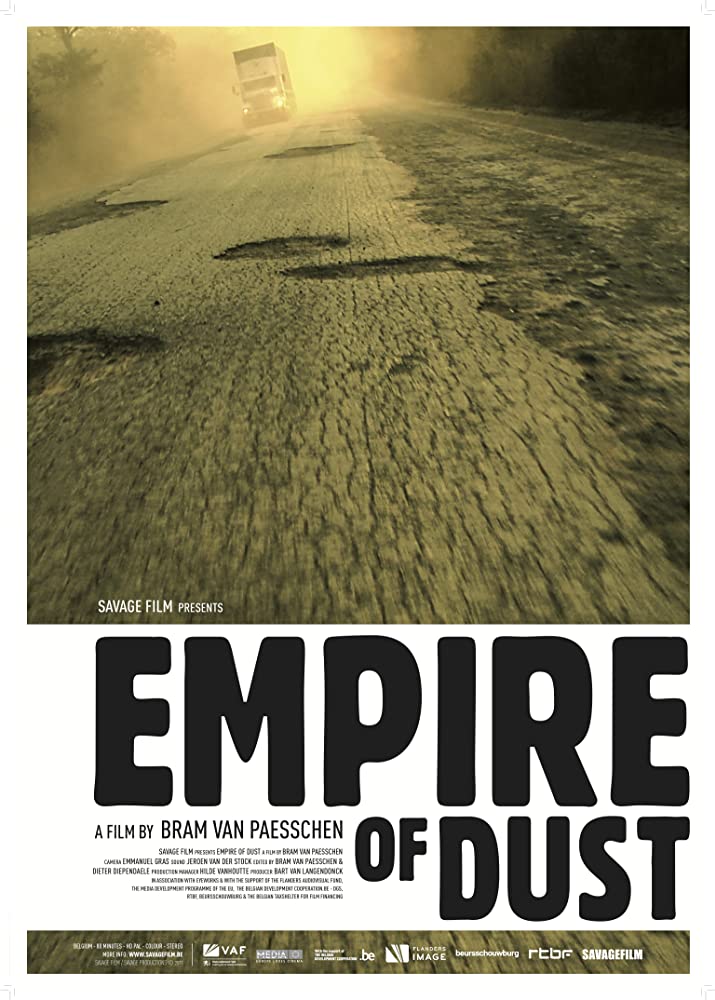
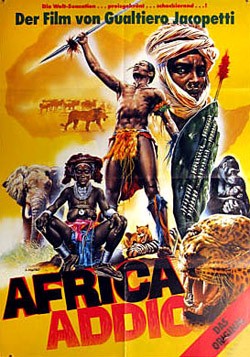
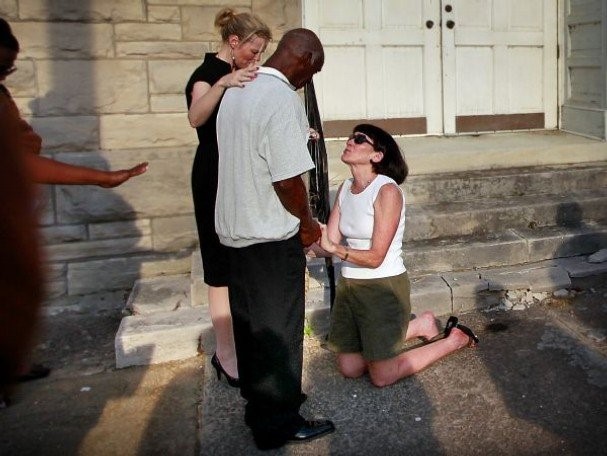

 The reasons behind Jewish cultural subversion remain the same whether it’s national immigration policy, the promotion of pornography, gay and LGBTQ+ rights, gay marriage, or the slow and steady erasing of Whites on television, commercials and the movies — namely, to make Whites a despised minority in the very country they’ve founded so that what occurred in Germany between the years 1933 to 1945 may never occur again. Jews may not at first agree with this point, but if you press them long enough, many of them will concede that White racial solidarity remains a constant fear of theirs.
The reasons behind Jewish cultural subversion remain the same whether it’s national immigration policy, the promotion of pornography, gay and LGBTQ+ rights, gay marriage, or the slow and steady erasing of Whites on television, commercials and the movies — namely, to make Whites a despised minority in the very country they’ve founded so that what occurred in Germany between the years 1933 to 1945 may never occur again. Jews may not at first agree with this point, but if you press them long enough, many of them will concede that White racial solidarity remains a constant fear of theirs.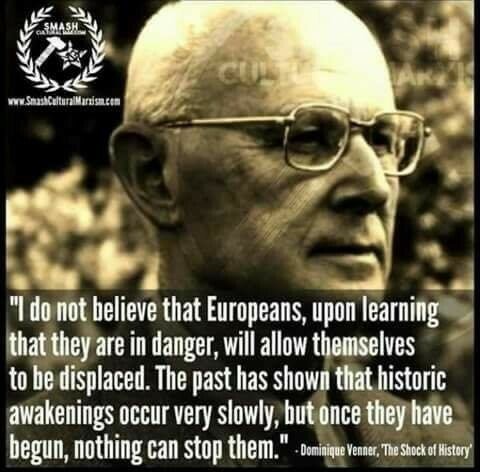

 Septimius Severus was born in Africa and died in Britain, but was neither Black nor British (image
Septimius Severus was born in Africa and died in Britain, but was neither Black nor British (image 
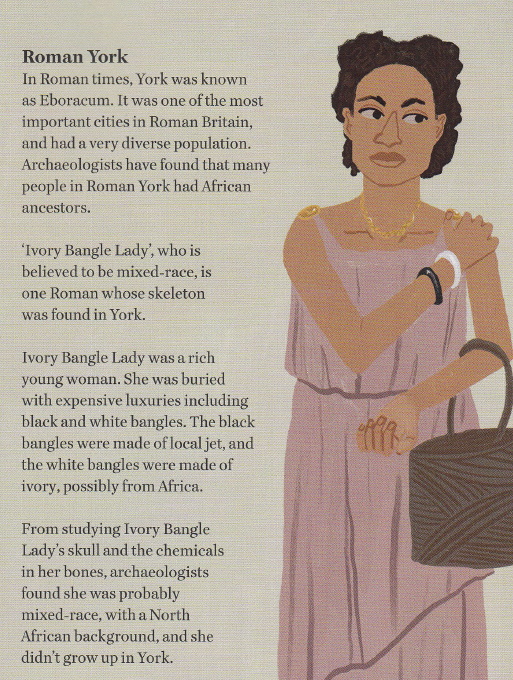

 Black Tudors, Miranda Kaufman’s “critically acclaimed” leftist propaganda
Black Tudors, Miranda Kaufman’s “critically acclaimed” leftist propaganda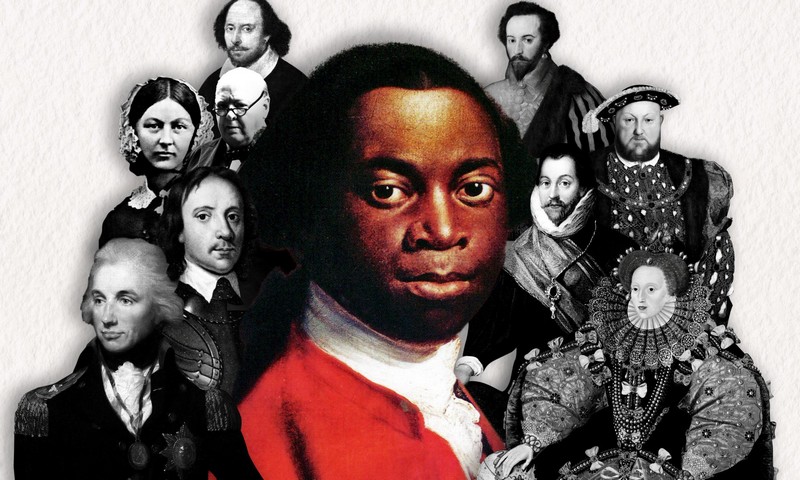
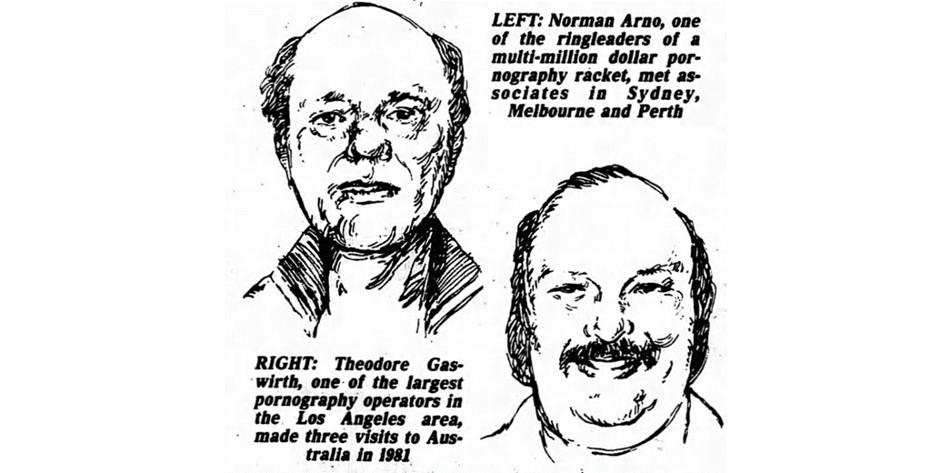 Sketches of Arno and Gaswirth
Sketches of Arno and Gaswirth

 A sample of popular Australian magazines and pulp fiction from the mid-1960s.
A sample of popular Australian magazines and pulp fiction from the mid-1960s.